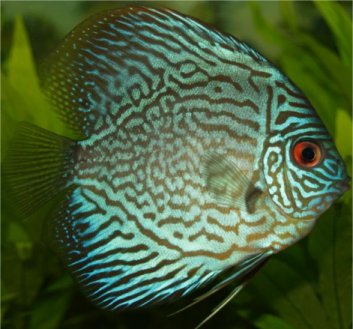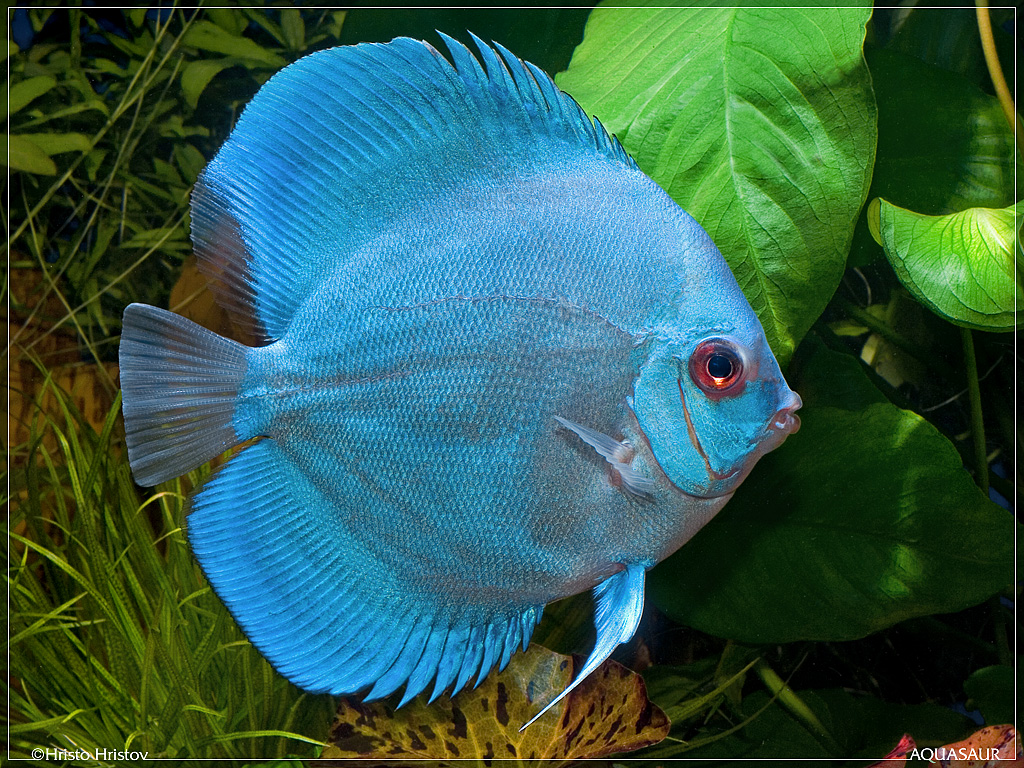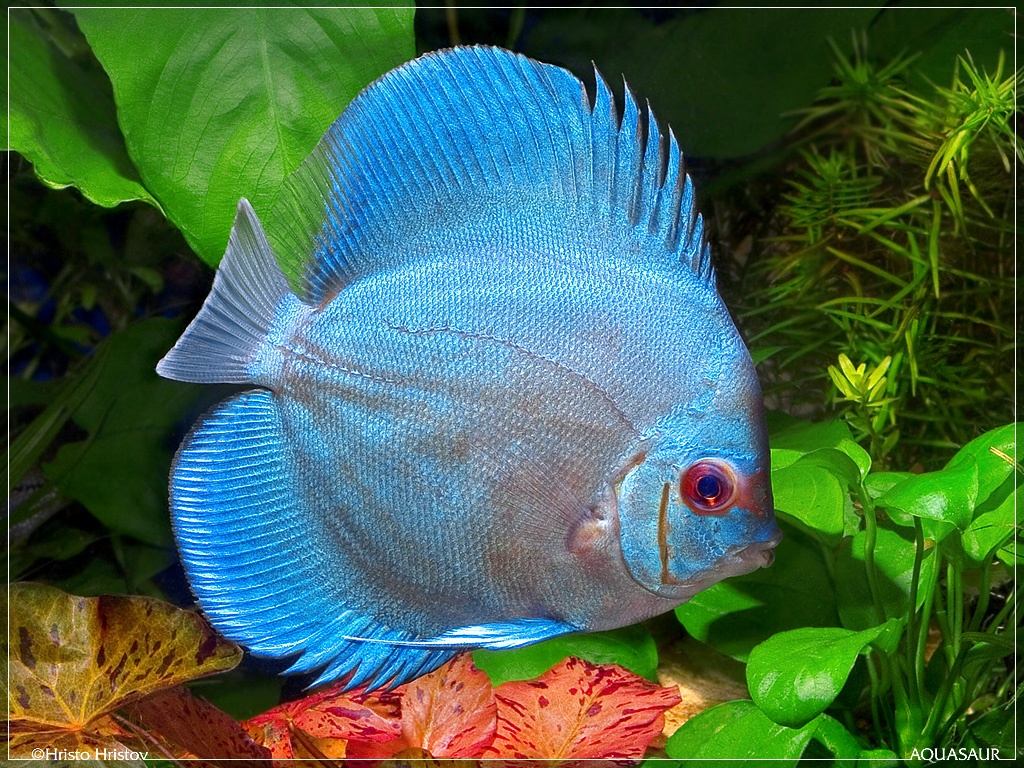
Symphysodon aequifasciata
FAMILY
Cichlidae
TAXONOMY
Symphysodon discus aequifasciata Pellegrin, 1904, Teffй and Santarйm,
Brazil.
OTHER COMMON NAMES
English: Brown discus, green discus; German: Blauer Diskus,
Grьner Diskus, Scheibenbarsch; Spanish: Disco azul, pez disco.
PHYSICAL CHARACTERISTICS
Maximum length 5.5 in (14 cm). Extremely laterally compressed,
almost perfectly round, dinner-plate shaped. Background
yellow-green to tan, with brilliant undulating streaks of
turquoise blue and numerous dark vertical bands running in
parallel.
DISTRIBUTION
Amazon basin from the Rio Putumayo in Colombia and Peru
to the Rio Tocantins in Brazil.
HABITAT
Calm waters in and around rock crevices, roots, and aquatic
vegetation.
BEHAVIOR
Rather shy, schooling fish, most comfortable in or near tangles
of submerged roots and branches or rock crevices. Becomes
somewhat territorial during spawning.
FEEDING ECOLOGY AND DIET
Feeds on insects and insect larvae, as well as zooplankton.
REPRODUCTIVE BIOLOGY
Forms monogamous pairs in which both parents care for the
young. Females lay clutches of about 100 eggs, which hatch in
roughly 60 hours, on branches or sturdy leaves. Within 4–5
days, fry become mobile and begin feeding on mucous secreted
from flanks of the parents, showing preference for the male. In
captivity, this mode of feeding can last as long as 8 weeks, although
other foods supplement the habit.
CONSERVATION STATUS
Not listed by the IUCN.
SIGNIFICANCE TO HUMANS
Extremely popular in the aquarium trade; many captive-bred
strains exist.
Other popular Animals
Photo Gallery of - Blue discus





 Animalia Life
Animalia Life